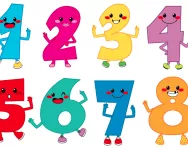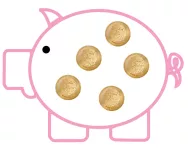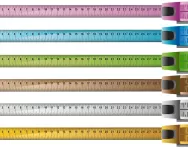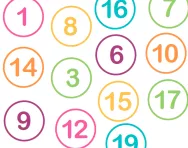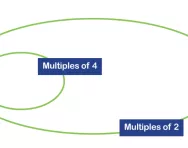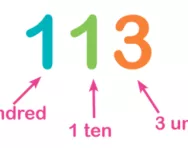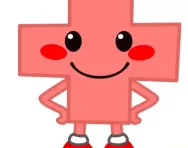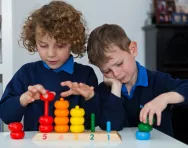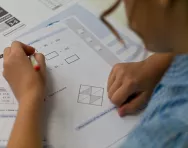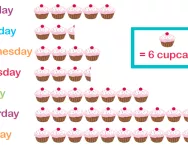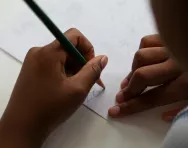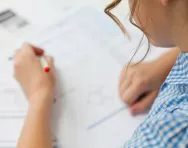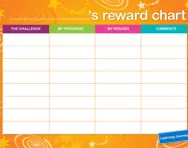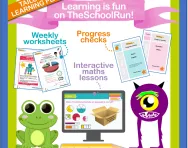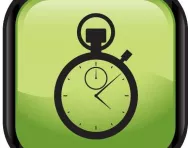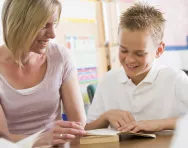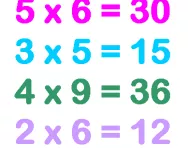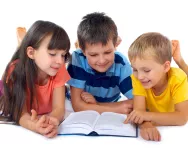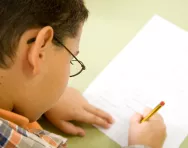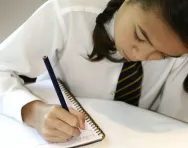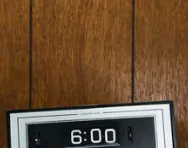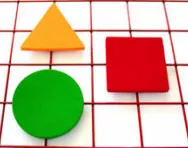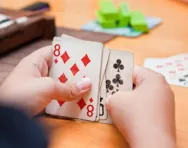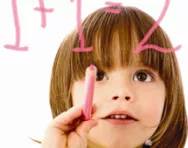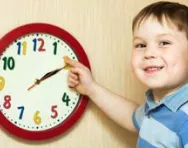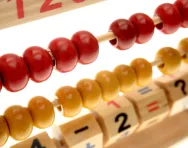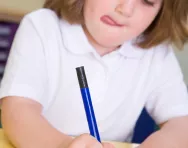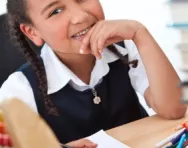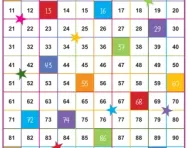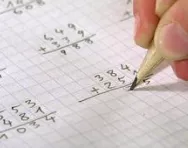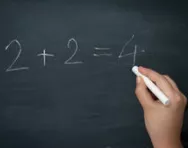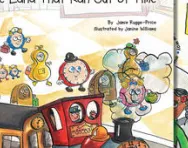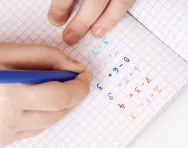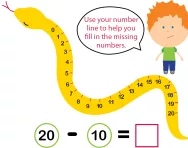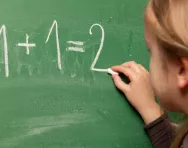5 number and counting skills primary-school children need
Numbers are all around us, almost from birth! Teacher Phoebe Doyle looks at counting, a fundamental aspect of mathematical understanding, to help your child grab the basics (without confusion!) from day one.
Teachers' tricks for shape, space and geometry
Throughout primary school children learn about the properties of the shapes in the world around them (primary geometry, in other words). Phoebe Doyle offers some insiders’ tips on helping them master shape and space maths targets.
Teachers' tricks for money maths
Money is the ultimate ‘real-life’ maths resource. Here's how to make the most of this tool to improve your child's maths learning at home.
Teachers' tricks for weights and measures
Weights and measures can be a really fun area of maths to teach in school – but one that can leave parents unsure of how to help at home. Teacher Phoebe Doyle has some hints and suggestions.
What are number bonds?
If your child is in Key Stage 1, chances are they'll have told you they're learning 'number bonds'... but what are they? Teacher Alice Hart explains why children are taught these number pairs, and how you can help your child practise them at home.
What is a Venn diagram?
Venn diagrams are often used to sort data in primary school. Find out what parents need to know about how to complete and read a Venn diagram correctly, plus how they're used in the classroom in KS1 and KS2.
What is place value?
A good understanding of place value (the value of each digit in a number) is vital in primary-school maths. Our parents' guide explains how your child will be taught about ones, tens, hundreds and thousands with number lines, arrow cards and more, as well as outlining how place value is used to help children visualise calculations.
What is subtraction on a number line?
Also known as the jump strategy or complementary addition, subtraction on a number line is a common technique in KS1 and KS2 maths, useful for helping children visualise that subtraction is finding the difference between two numbers. Teacher Alice Hart explains the method and how it's taught in primary school maths.
Teachers' tricks for addition
Help your child with their addition work, from the basics in Reception to calculations in KS1 and KS2, with some teachers' tricks to help the learning stick.
Does my child have dyscalculia?
What are the signs to look out for if you think your child might have dyscalculia or 'number blindness', and what can be done to help?
7 strategies to help defeat children’s fear of maths
What does it mean if your child has a fear of maths, and what can you do to help them get over it? TheSchoolRun offers a step-by-step plan to help you boost your child's confidence – and your own.
What is a pictogram?
Pictograms are introduced in Year 2 as a simple and engaging introduction to bar charts. We explain what your child needs to know about pictograms and how to read and create them, as well as explaining when and how they're taught.
What are inverse operations?
Inverse operations are opposite operations – one reverses the effect of the other. In primary maths we talk about the inverse to explain how addition and subtraction are linked and how multiplication and division are linked. Teacher Alice Hart offers examples of how and when your child will be asked to use the inverse operation in school, and practical ways to help them understand the concept.
Your child's new school year preparation plan
Each year group brings fresh challenges in literacy and numeracy. Want to give your child a head start? Primary teacher Phoebe Doyle offers some easy-to-action advice on tackling an objective from the year group your child is about to enter during the summer break.
National Reading and Numeracy Tests explained for parents
All children in Wales from Y2 to Y9 take tests in reading and numeracy at the end of each school year. Find out what these tests involve, and how you can help your child prepare for them.
6 steps to a money-savvy child
We all want our kids to have the very best future, and ensuring they’ve got money sense is crucial to help make it happen. Mum-of-two and financial whizz Emily Richards shares a few down-to-earth strategies to equip your child with money management skills for life.
The Learning Journey reward chart and certificates
Support your child's Learning Journey with these fantastic motivational resources – a colourful reward chart where you can set your own challenges and choose rewards together, and printable certificates to celebrate success.
How the Learning Journey works
Find out how our fantastic primary school learning programme – The Learning Journey – could benefit you and your child as well as full details of how to use the reward charts and certificates!
What is mental maths?
The ability to work sums in your head is an important skill that primary students must develop throughout the key stages. We explain what mental maths means in National Curriculum terms, and how you can help your child become a quick calculations whizz!
Teachers’ top 10 classroom discipline tricks
Does every homework session end in tears and tantrums? Or are you losing sleep over getting your child to learn their spellings? Lucy Dimbylow asked the people who manage 30 children at a time (gulp!) – teachers and teaching assistants – to share their tried and tested tricks.
Times tables: 10 things every parent needs to know
If you're a KS2 parent, chances are you'll spend more time than you ever thought possible looking for ways to help your child learn their times tables. Here are the ten things you should know before you get started.
11 things parents need to know about the National Curriculum
It’s the basis for what your child learns every day, but what exactly is the National Curriculum and what does it teach? Education writer and primary teacher Phoebe Doyle offers some clarity.
What your child learns in Year 2 maths, English and science
Year 2 is when your child may take their Key Stage 1 assessments, but what does that mean? What will they learn? And how can you help? Find out in our parents’ guide.
Teachers’ tricks for learning times tables
Do you dread times table practice as much as your child does? Primary school teacher Alice Hart uses these effective learning strategies in her classroom – give them a try to liven up today's homework time.
Telling the time: how to help your child learn
Learning to tell the time is not an easy process, so to help you help your child we have broken it down into separate learning stages.
Help your child learn about shapes
Learning about shapes and geometry plays a major part in your child's numeracy education across the Key Stages. Here are some tips to help them get a head start.
Everyday ways to make maths fun
Want to instil a love and appreciation of maths in your primary school child? You can with our practical suggestions to help make numbers fun.
Teachers' tricks for KS1 maths
Some young children just can’t get their head around adding numbers together. Education writer Phoebe Doyle explains some helpful strategies that are most often used in primary teaching today.
Teach your child to read a clock
Reading an analogue clock is a tricky skill to master. Help your child get to grips with it with our teaching-time guide.
A maths homework help guide for KS1 and KS2
Maths is not always a popular subject with children. But with these handy tips and downloadable worksheets, it can become a lot more fun.
Top times tables games
Help your children enjoy learning their times tables with a few easy games. Education writer Phoebe Doyle suggests five ideas for you to try.
What your child learns in Key Stage 1 maths
Unsure about what your child will be learning in maths in years 1 and 2? Find out here.
Year 2 maths: what your child learns
Your guide to what’s covered in the maths curriculum in Year 2, from partitioning to pictograms.
What is a number square?
Do you know what a number square is and what to do with one? Here’s our parents' guide to everything you need to know about this primary-school maths aid so you can support your child when they’re working with to add and subtract in Key Stage 1.
How to help with maths homework: a non-expert's guide
Maths is one subject that fills many parents with dread - but is it really so hard? We talk to author and deputy head teacher Matt Revill to find out how parents can help their children's maths learning.
Learning numeracy at home
All around us are a wealth of mathematical problems just waiting to be solved. Here’s how to help your child extend their numeracy skills at home.
Teaching time the 21st century way
Are you struggling to teach your child to tell the time? Elena Dalrymple reviews a new story-based learning method.
What is partitioning?
Not sure what your child means when they talk about partitioning numbers in maths problems? We explain the method, and how your child will use it.
What is a number line?
Spotted something about a number line in your child’s homework instructions, and not sure what it means? We review the basics of this amazing, adaptable educational tool and explain how it's used in KS1 and KS2 maths.
Easy ways to engage your child with maths
Do the words “I need help with my maths homework” strike fear into your heart? Our tried-and-tested tips from maths experts will help change your child’s attitude to numbers – and yours
